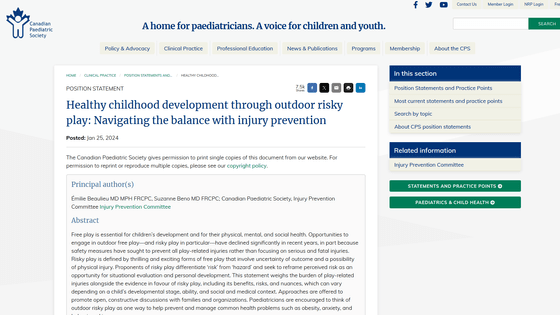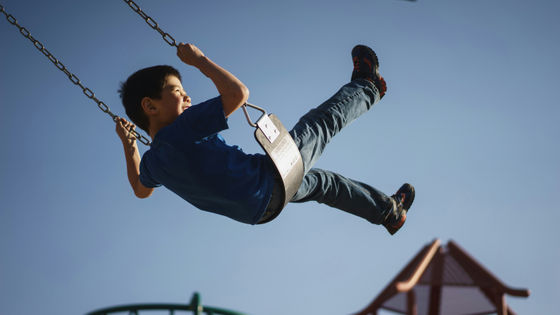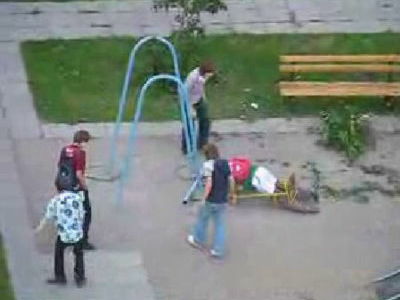Children grow through risky outdoor play, and the key is to provide appropriate adult support and strike a good balance between injury prevention and play.

Children often engage in 'risky play' outdoors, such as climbing to high places or riding bicycles too fast. However, in recent years, opportunities for children to play freely outdoors have been declining in order to prevent all play-related injuries. However, a research team from the Canadian Paediatric Society (CPS) has issued a statement urging children to engage in risky play in order to prevent common health problems such as obesity, anxiety, and behavioral problems, while nurturing their mental, social, and emotional development.
Healthy childhood development through outdoor risky play: Navigating the balance with injury prevention | Canadian Paediatric Society

The importance of risky play for childhood development
Below are the categories and examples of 'risky play' envisioned by the CPS: The CPS defines 'risky play' primarily as any form of thrilling or exciting free play that involves uncertainty about the outcome or the possibility of physical injury.
| Play Category | example |
| Playing at height | Climbing to high places, jumping from high places, balancing at high places |
| Speedy play | Speeding on a bike, sliding down a sled |
| Playing with tools | Use of axes, saws, knives, hammers, ropes, etc. |
| Potentially dangerous play | Playing near fire or water |
| rough play | Wrestling, martial arts, and fencing using sticks |
| Playing with a risk of getting lost or missing | Exploring the neighborhood or woods without adult supervision |
| Shocking play | Repeatedly bumping into something or someone |
| Vicarious play | get a thrill from watching other children play dangerous games |
These 'risky play' activities are very important because they provide children with opportunities to engage in imaginative play in outdoor environments that include natural materials like gravel, sand, and branches. However, Suzanne Beno, chair of the CPS Injury Prevention Committee, points out that 'when creating opportunities for risky play, we need to be mindful of the difference between 'risk' and 'hazard.''
According to Beno, a 'risk' is a situation in which a child can assess the challenge and decide on a course of action based on their own cognitive ability, such as 'how fast can they run down a slope?'. On the other hand, a 'hazard' is a situation in which the possibility of injury exceeds a child's cognitive ability, such as 'a slide that could tip over even with a child's weight' or 'a rotten tree that could easily break.'
Beno argues that by providing children with appropriate 'risks' while reducing or eliminating 'hazards,' children can develop their own risk management strategies through risky play.

In fact, it has been
It has also been suggested that children who engage in risky play develop better social skills and a sense of belonging with their peers, and that situations that allow them to test their limits may improve their ability to communicate and cooperate with others.
As you can see, risky play has many benefits, but the balance between risk-taking and injury prevention needs to be struck correctly. While injuries from risky play are often minor, such as scrapes and sprains, it's important to consider each child's age, ability, and comfort level when eliminating risks and allowing them to make their own decisions about how they play.
Therefore, adults are required to take safety measures for children, such as making sure children wear helmets when riding bicycles, keeping an eye on children playing on the road, and not letting children play in places that are inappropriate for playing.

Additionally, parents repeatedly telling their children things like 'be careful' or 'are you okay?' can make them feel like they're not trusted or that they don't think they can do it, which can lead to them losing interest in play. Therefore, some experts
Appropriate parental intervention can raise awareness of a child's situation and behavior and can help a child overcome difficulties or solve problems.
According to SickKids, 'To promote risky play, adults need to create a safe, supportive environment that allows children to take risks. Taking a balanced approach that keeps children as safe as they need to be, rather than as safe as possible, can help create a healthy, active lifestyle for children.'

Related Posts:







